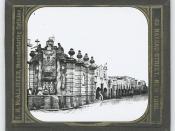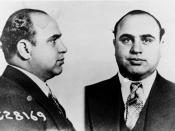Criminal organizations are groups or operations run by criminals, most commonly for the purpose of generating a monetary profit (Federation of American Scientists, 1998). The Organized Crime Control Act defines organized crime as the unlawful activities of a highly organized, disciplined association (Federation of American Scientists, 1998). Some criminal organizations, such as terrorist organizations, are politically motivated. Gangs sometimes become disciplined enough to be considered organized. An organized gang or criminal set can also be referred to as a mob. The act of engaging in criminal activity as a structured group is referred to in the United States as racketeering. When I think of organized crime I picture it being compared to an army with a rank structure, ranging from as high up as Generals to as low as potential members that must prove their worth before becoming part of the group; all working together as a whole to achieve the goal of successfully overriding the laws set out before them.
More specifically, there are two major names that pop out in my head: Al Capone and the Juarez Cartel.
Al Capone is America's best known gangster and the single greatest symbol of the collapse of law and order in the United States during the 1920s Prohibition era (Chicago Historical Society, 1999). Capone had a leading role in the illegal activities that lent Chicago its reputation as a lawless city. Capone was born on January 17, 1899, in Brooklyn, New York. He grew up in a rough neighborhood and was a member of two "kid gangs," the Brooklyn Rippers and the Forty Thieves Juniors. He became part of the notorious Five Points gang in Manhattan and worked in gangster Frankie Yale's Brooklyn dive, the Harvard Inn, as a bouncer and bartender. While working at the Inn, Capone received his...


